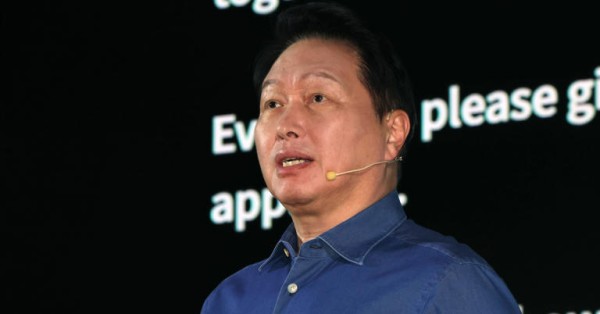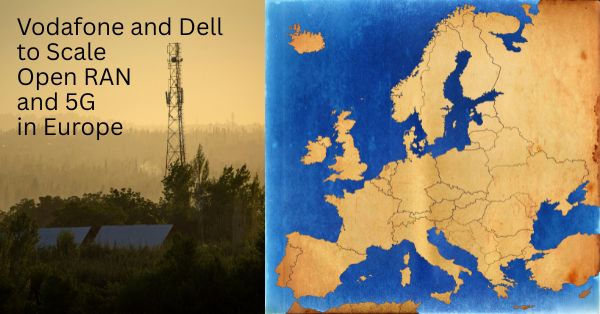In a recent discussion with Geoff Hollingworth of Rakuten Symphony, he shared firsthand insights into Rakuten Mobile’s bold journey toward a fully cloud-native, Open RAN-based mobile network in Japan. Speaking candidly about challenges, misconceptions, and industry-wide learnings, Hollingworth outlined how Rakuten’s experience is reshaping operator expectations worldwide. His reflections illuminate not just the technical achievements but the strategic mindset shift required for the telecom sector to evolve.
Why Rakuten Mobile Chose Open RAN Before It Was ‘Ready’
According to Geoff Hollingworth, Rakuten Mobile did not begin its journey with certainty that Open RAN was “ready.” Instead, the company embraced the principle that innovation rarely begins with full clarity.
“There was a lot of skepticism when Tareq Amin, who was Rakuten Mobile CTO at the time, decided to go down the Open RAN direction and the fully cloud-native virtualized direction in 2018. We have realized that when you do something and try very hard, the rewards are very good.”
Rakuten Mobile ultimately deployed 275,000 cells while maintaining an operating team of 250 people, an achievement Hollingworth attributes to automation, software-defined operations, and a willingness to break traditional norms.
How Rakuten Mobile Measures Success in Open RAN at Scale
Hollingworth emphasized that the industry should measure success not by assumptions about maturity, but by the outcomes achieved. Rakuten Mobile has already demonstrated success in key operational markers:
- Over 275,000 cells deployed at hyper-scale
- A lean operations team empowered by Symworld, Rakuten’s cloud-native network platform
- Proven performance in Tokyo, one of the most demanding markets in the world
“Rakuten Mobile’s network in Tokyo receives ‘very good’ rating from independent analyst firm umlaut.”
For Hollingworth, this serves as proof that cloud-first, virtualized architectures can thrive even in extremely dense urban markets.
Greenfield vs. Brownfield: Can Rakuten’s Open RAN Model Scale Elsewhere?
During the interview, Hollingworth addressed the widespread belief that Rakuten’s accomplishments apply only to greenfield deployments. He rejected this notion, explaining that Open RAN provides modernization value in both new and existing networks.
“We disagree with that. Open RAN is the application of new modern technologies into a business and an operation.”
Hollingworth described brownfield environments as “collections of greenfield opportunities,” where operators can modernize selectively and strategically.
“I fully predict that some of the existing infrastructure and operations will be here in 10 or 15 years. However, we should change the ones we want to change as quickly as possible and create a new operating model and growth.”
Beyond the Hype: A Practical View of Open RAN for Operators
Hollingworth noted that Open RAN discussions are often polarized—either overly enthusiastic or dismissive. He argued that neither extreme helps operators make informed decisions.
“Hype is not productive in any context. Neither is saying that something isn’t ready or it’s not possible to do.”
Instead, he encouraged operators to concentrate on business results, operational relevance, and the outcomes required for digital competitiveness.
The Rakuten Mobile Journey: Scaling Open RAN Through Trial and Change
Hollingworth explained that Rakuten Symphony was created to share its lessons with the broader telecom ecosystem, but stressed that each operator faces a unique path.
“And let me be clear, the journey that Rakuten Mobile has been on has been the Rakuten Mobile journey. Each journey will be unique for each operator.”
He emphasized that modernization should be problem-driven, not technology-driven.
“So let’s break the conversation down into different problems that we need to solve and identify whether we can solve those in new, different ways with different outcomes.”
What ‘Open’ Really Means in End-to-End Open RAN Deployments
Some operators question whether end-to-end Open RAN stacks undermine openness by consolidating vendors. Hollingworth noted that openness is not about maximizing vendor count but maximizing transparency and choice.
“The previous generations of mobile have increasingly become opaque and black boxes.”
He illustrated this using Rakuten Mobile’s own deployment, which incorporates nine different radio vendors, all managed in a unified, software-driven manner.
“Now, with open interfaces, it allows you to reimagine how you want to put together the solution to provide that coverage.”
Telecom Standards vs. Progress: Finding the Balance
Hollingworth acknowledged the importance of telecom standards, but cautioned against treating them as gatekeepers to innovation.
“Standards are very important, but standards should not slow down the industry’s progress.”
Drawing parallels with the web industry, he described how evolving standards can be absorbed by flexible software architectures without halting development cycles.
Lessons from Scaling Open RAN: From Hardware to Software-Defined Networks
Hollingworth summarized Rakuten Symphony’s learnings from deploying Open RAN at a national scale, noting a fundamental shift from hardware-centric to software-centric business models.
“It takes an artist to deploy one Open RAN base station, but it takes software and an industrialized automation platform to scale that to 1 million cells.”
He outlined clear transitions the industry must embrace:
| From | To |
|---|---|
| Capital/people-intensive | Software/automation-intensive |
| Ten-year innovation cycles | Weekly streams of innovation |
| Big Bang RFP tech model | Trial-to-scale/speedboat model |
| Opaque supply chain limitation | Transparent supply chain choice |
| Generationally improving economics | Continuously improving economics |
| Commodity services race to bottom | Digital ecosystem enabler |
The Telecom Mindset Shift: Why Software and Data Skills Matter
The interview concluded with a discussion on the human transformation needed within telecom. Hollingworth emphasized that Open RAN is not merely a technical evolution—it requires a cultural one.
“The most important aspect of the change process that Telecom has to undergo is adopting a completely new mindset.”
Beyond mindset, he stressed the growing importance of software and data expertise in building next-generation networks.
“We need to consider software and data from a skill set point of view.”
For Hollingworth, telecom modernization represents a mission capable of inspiring the next generation of engineers.
“There is no more important or satisfying or bigger mission they can participate in.”













































